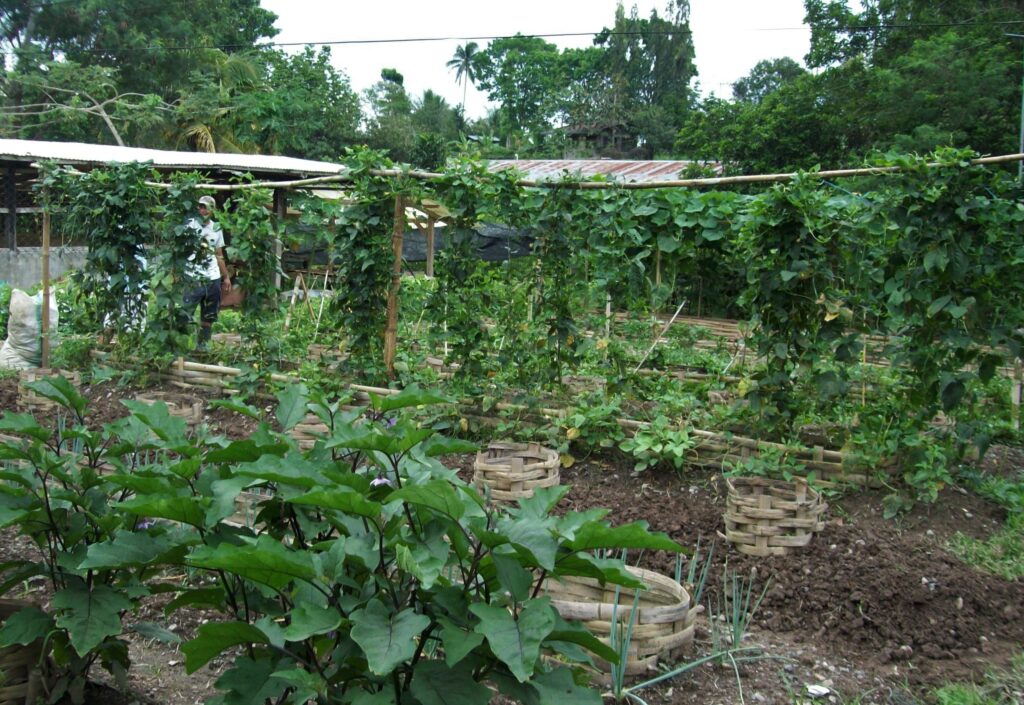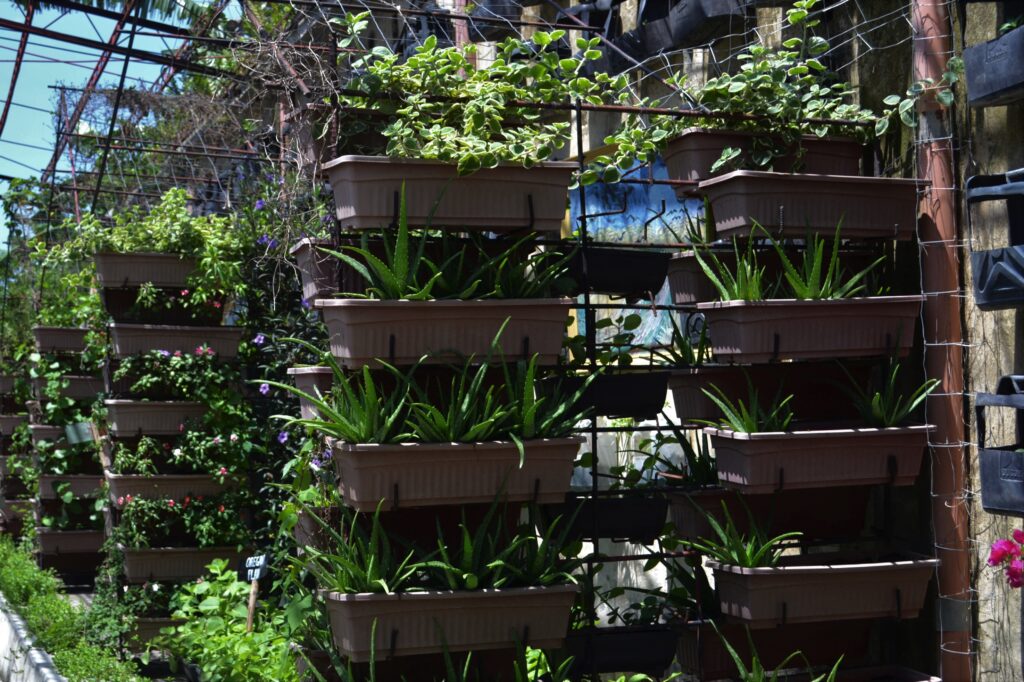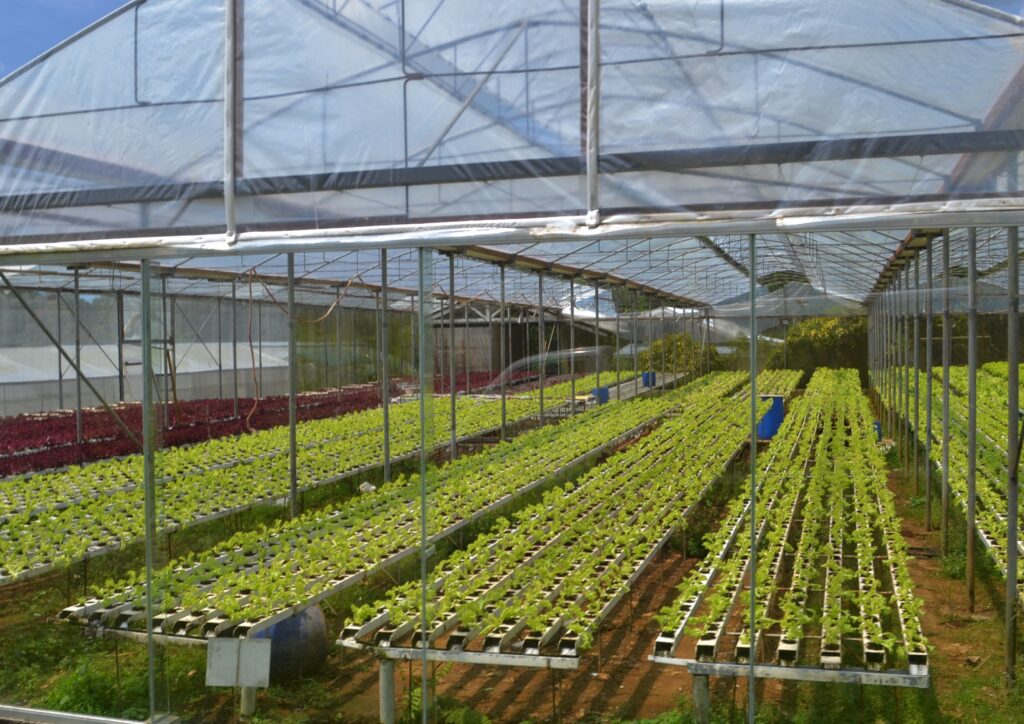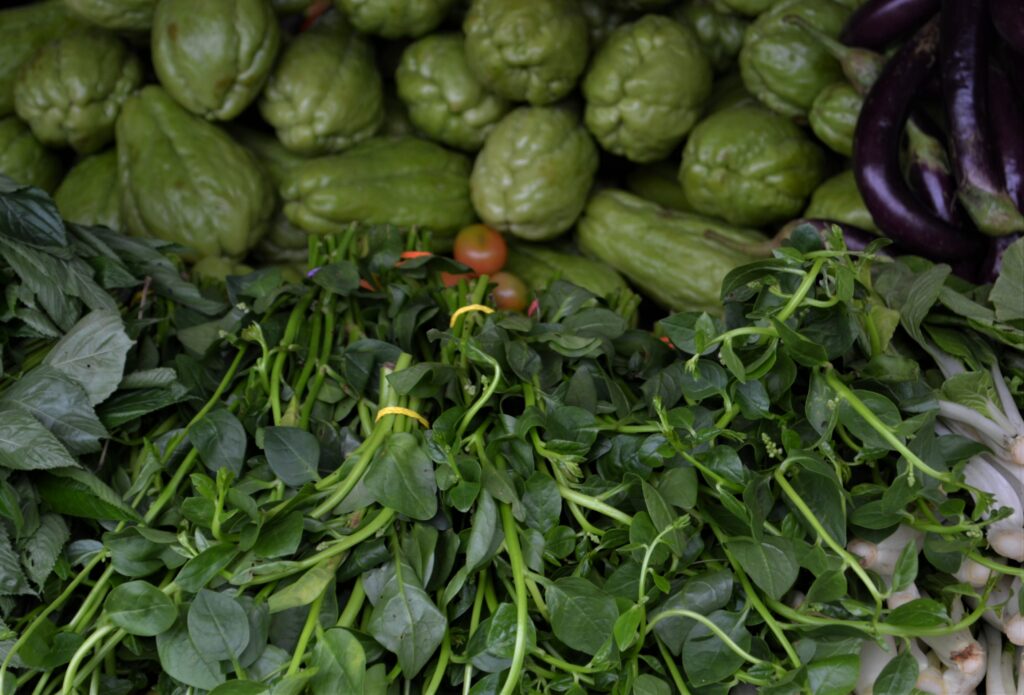Text and Photos by Henrylito D. Tacio
Almost always, farming is associated with rural areas and the countryside. But in recent years, it is now being practiced even in the cities. When the coronavirus disease 2019 (COVID-19) pandemic hit the country in March last year, Filipinos are urged to stay home.
With nothing to do and food sources getting scarce, people are planting in their backyards or places available for growing crops. In time, the value of urban agriculture comes to light.
“Vegetables and fruits are more nutritious,” explains Agriculture Secretary William D. Dar when asked about the relevance of urban agriculture in the times of pandemic. As such, they help “build up the immune systems of individuals.”
Urban agriculture is becoming popular these days because of the exploding population living in the cities. As such, hunger becomes prevalent. Although not necessarily happening in urban areas, one in nine people is hungry, according to the 2020 Global Nutrition Report.

The Philippines is not spared from hunger. In fact, a survey conducted by the Social Weather Stations has shown that many Filipinos experience hunger.
“It is ironic that millions of Filipinos go hungry even if our country is so rich in natural resources,” deplores Loren Legarda when she was still with the Senate. “To effectively reduce, and hopefully eliminate, hunger, as well as malnutrition and poverty, we have to provide our people the kind of support that will have long-term effects. We need to boost food self-sufficiency through stronger support for agriculture and to establish community gardens.”
Dr. David Nabarro, special representative of the United Nations secretary-general for food security, echoes the same concern. “The need for more equitable, resilient and sustainable food and health systems has never been more urgent,” he emphasized.
That’s where urban agriculture comes in. “While agriculture is largely a rural phenomenon, urban agriculture can also help increase the resilience of some urban poor to external shocks and improve their access to fresh vegetables, fruits and animal products,” explains the UN Food and Agriculture Organization (FAO).

FAO defines urban agriculture as “crop and livestock production within cities and towns and surrounding areas.” It can involve anything from small vegetable gardens in the backyard to farming activities on community lands by an association or neighborhood group.
Urban agriculture is not a new phenomenon. Wikipedia, the free encyclopedia, reports that during World War I, US President Woodrow Wilson urged fellow Americans to utilize any available open space for good growth, “seeing this as a way to pull them out of a potentially damaging situation.”
In 1893, people of the depression-struck Detroit in the United States were asked to use any vacant lots to grow vegetables. During the 1960s, several community gardens were reportedly established in the United Kingdom, influenced by the community garden movement in the United States.
In his Manila Bulletin column, Senator Francis N. Tolentino cites four reasons why urban agriculture – “a very promising alternative that can help manage and stabilize the prices of prime commodities” – must be pursued relentlessly by Filipinos who live in the cities.
“Urban farming is undertaken for the following purposes: (1) for addressing food shortage in the community, (2) for maintaining the environment, (3) for ensuring adequate food supply within the community, and (4) stabilization and strengthening of food prices in the market,” wrote Sen. Tolentino.

As support to this growing interest in urban agriculture, the Laguna-based Southeast Asian Regional Center for Graduate Study and Research in Agriculture (SEARCA) has come up with a new policy paper entitled, “Policy imperatives to promote urban agriculture in response to COVID-19 pandemic among local government units in the Philippines.”
“At the current rate, urban agriculture shortens the food supply chain, and in the process empowers consumers to have more control and direct access to food,” the policy paper explained. “This ensures access to the ways and means for the consumers to produce their own food and is now viewed as a democratic process that enables individuals and families to be more self-sufficient and self-reliant.”
The policy paper notices that various designs of urban agriculture systems are up for the picking in recent years. Below are some of the examples of emerging ideas for urban farming:
Containerized and modular farming: Food can be grown indoors or outdoors, even in concrete spaces, by using growing containers. This method can use recycled products, surplus materials, and otherwise considered waste output from residential, commercial, and industrial operations.
Vertical farming: This utilizes height to maximize plant growth. Containers like wall cups can be used on the walls of buildings. It is best utilized if integrated into the overall architecture and design of the infrastructure. Alternative technologies may be used, such as hydroponics or the use of water as a medium to grow crops instead of soil, and aquaponics or the utilization of the symbiotic relationship between the fish and the plant to grow food.
Closed-loop system: This combines technologies on crop production, water conservation, waste-to-energy, solar power, aquaculture, among many others. This scheme is based on the concept of nutrient efficiency through reduced dependence on external farm input. For instance, the irrigation system can tap solar energy to reduce energy consumption and improve water use efficiency.

The policy paper also highlights three general principles of urban agriculture when it comes to basic cultural management:
Provide unrestricted conditions for the free movement and growth of roots. This means the root system should establish good anchorage in the soil. The plant should also take enough water and nutrients to facilitate hormonal synthesis and trigger the storage of nutrients and/or movement to the shoot system.
The right medium is loose/coarse and light soil. Recommended soil medium is 20% processed animal manure, 20% sawdust, 5% lime, 15% carbonized rice hull, and 40% regular soil.
Put on nutrients readily available. Nutrients like nitrogen, phosphorus, potassium, secondary, and micronutrients can be supplied to the plants using supplemental microorganisms and humic acid.
Produce a strong root system using a plant growth regulator supplement.
The policy paper – authored by Rico C. Ancog, Glenn Gregorio, Arlene B. Arcillas, Erlinda C. Creencia, Victorino E. Aquitania, Gerald Glenn F. Panganiban, and Garry A. Hidalgo – featured three successful urban agriculture programs:

· In Laguna, the Santa Rosa government has implemented a pilot urban agriculture demonstration project as part of its efforts to strengthen the city’s climate change adaptation program while also ensuring the promotion of safe and fresh produce.
· In Nueva Ecija, the Central Luzon State University of the Science City of Muñoz has adopted the concept of urban agriculture since early 2000 using recyclable containers and receptacles, which has been disseminated and replicated in several barangays of the municipality.
· In Quezon City, an urban agriculture program, called Joy of Urban Farming, was launched in 2010. It piloted three demonstration farms in Quezon Memorial Circle, which has been instrumental in showcasing urban agriculture concepts and set-ups for interested individuals and organizations.
“It will be strategic for local government units to implement an urban agriculture strategy to sustainably mainstream it in local governance,” the policy paper stated, adding that sustainability of such strategy is highly determined by financial and political legitimacy.
“Formal recognition and support for urban agriculture is beneficial for both urban farmers and the city,” the paper said. “Overall, implementation depends on the measures of financial, physical, social, and human capital that the local government could invest in, commit, and sustain.”
Last year, Senator Francis Pangilinan filed Senate Bill 257, otherwise known as the “Urban Agriculture and Vertical Farming Act of 2019,” wherein he urged the public to grow crops in idle or abandoned government-owned lots and buildings.
“In our homes, we can start with planting herb gardens, even if only in garden plots,” the senator was quoted as saying by The Manila Times. “Aside from the joy of savings in grocery bills, there’s also joy in harvesting and eating your own products.”

